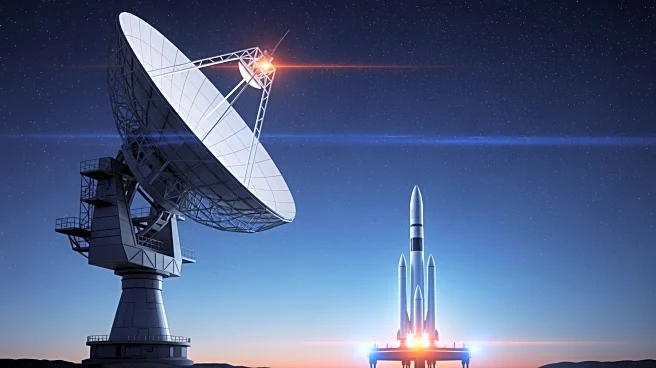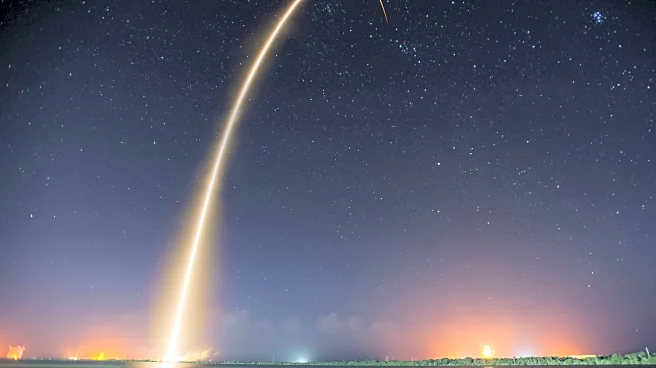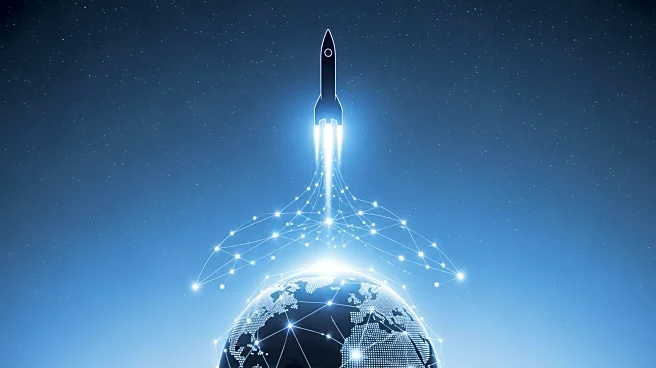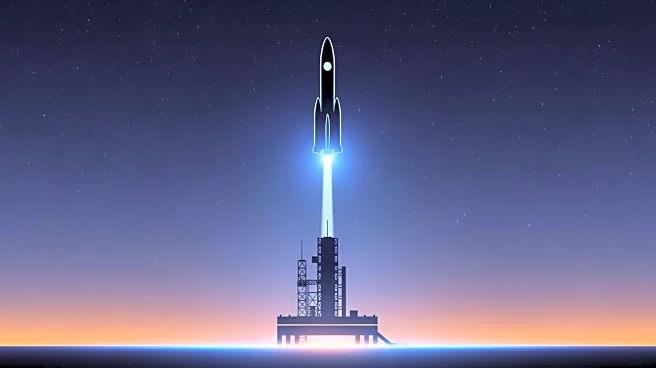What's Happening?
SpaceX successfully launched 29 Starlink satellites from Cape Canaveral Space Force Station, marking its 100th mission of the year. The launch took place at 10:39 p.m. EST, with the Falcon 9 rocket deploying the satellites into low Earth orbit. This milestone
highlights SpaceX's significant contribution to the record-breaking rocket traffic from Florida's Space Coast, which has seen more than 90 launches this year. The mission underscores SpaceX's role in expanding global internet connectivity through its Starlink program.
Why It's Important?
SpaceX's achievement of 100 launches in a single year demonstrates its growing influence in the aerospace industry and its capacity to deliver frequent and reliable space missions. The deployment of Starlink satellites is crucial for expanding internet access worldwide, particularly in remote and underserved areas. This development supports SpaceX's goal of providing high-speed internet globally, enhancing communication and connectivity. The success of these missions also reinforces the U.S.'s leadership in space exploration and technology.
What's Next?
SpaceX plans to continue its Starlink satellite deployments, with the next mission scheduled for November 22. The company aims to increase the number of satellites in orbit to enhance global internet coverage. As SpaceX expands its operations, it may face regulatory challenges and competition from other satellite internet providers. The company will likely focus on improving satellite technology and network infrastructure to maintain its competitive edge.
Beyond the Headlines
The rapid expansion of satellite internet services raises questions about space traffic management and the environmental impact of increased satellite launches. As more satellites are deployed, concerns about space debris and orbital congestion grow. SpaceX and other companies must address these challenges to ensure sustainable space operations and minimize risks to existing satellites and spacecraft.

















